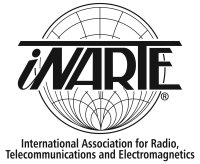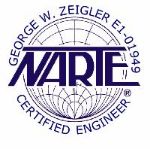Electrical Protection for Electroencephalography Recording Using the Zero Method:
By
1Daniel Soleil, 2Jean-Michel Badier, 3Maryvonne Lemesle
1Consulting-Engineer, F-13 560 Sénas
2Clinique Neurologique Professeur Patrick Chauvel
3Direction des Travaux, CHR Pontchaillou, F-35 033 Rennes
Abstract--The conception and solutions used for the electrical protection and shielding of an EEG (Epilepsy) unit are presented. Solutions are based on the "zero" method. Principle of this method consists of eliminating all stresses in the areas of measurement. Original solutions for the conception as well as maintenance procedures are presented. First EEG recordings gave satisfactory results.
I. INTRODUCTION
Because of the tiny amplitude of electrical potential at the surface of the head, electrical problems, quality of the power supply, protection against electrical and magnetic perturbations, as well as safety for the equipment and the patient are major concerns for people designing laboratories for electroencephalography (EEG). One of the most common solutions applied is the Faraday cage [1] which gives partial isolation of low frequency electrical fields. However it can be demonstrated that this solution is often not sufficient to protect against perturbation like the well know 50 (or 60) Hz signal that invades the EEG. This occurs despite the high quality bipolar amplifiers that are available now. The following paper presents solutions that were applied to a new epilepsy unit that includes 5 long and short term EEG rooms, 2 research and clinical laboratories that are mainly devoted to evoked potentials recordings and various offices and meeting rooms.
II. GENERAL PRINCIPLES
A. The "zero" method
The method developed here consisted of approaching the "zero" condition that is "zero" current in the connections and "zero" potential between the reference points. Limits are given by the practical and physical considerations. i.e. 1) cost of the zero operation, 2) constraints given by the architecture of the unit and the neighbourhood, 3) know-how of the company in charge of the electrical installation and 4) self perturbations by the systems inside the shielded environment (Personal Computers for instance).
B. Measurement of the perturbations
A MES 904 voltammeter (to be commercially available soon) was used for the measurement of the perturbations. It measures the actual tensions in peak value between 10 KHz and 10 MHz, in order to reproduce the effects obtained by traditional wirings. It has been substantiated that they are insensitive to low frequencies up to a few KHz at which a lot of energy is needed to excite them. They are also insensitive to very high frequencies where they are not able to render the energy by current circulation. This device detects µV perturbation levels which correspond to an exceptional zero level.
III. POWER SUPPLY
A. Electrical power of the unit
The entire unit has been supplied by reinforced-shielded transformers equipped with capacitors for filtering and phasing the cos Phi. The circuits are of two types [2], the sensitive power supplies (SPS) for the laboratories equipments and the regular power supply (RPS; offices, light, ventilation, etc.). SPS transformers are monophase with a common middle point connected to the sensitive ground (SG; fig.1). The RPS is traditional with an earthed neutral.
B. Electrical distribution
As much as possible, sensitive and regular power supplies have separate tracks. Middle point wiring gives symmetrisation of the sensitive sources, thus avoiding propagation of electromagnetic fields. The electrical outlets for the SPS are designated by a different color and are useable only with standard plugs equipped with a furnished accessory safeguards against connections of unintentional devices which could be responsible for perturbations. Even in the non sensitive areas and for the RPS, all known sources of perturbations have been prohibited. For instance lighting in the unit is provided by incandescent lamps instead of fluorescent lamps, and appliances are tested by the MES 904 before being used.
C. Ground circuitry
The building ground (BG) is a conventional electrical earthed network and is used for the RPS. The SG network [3] is used for the SPS. It is directly connected to the middle point of the transformers (fig. 1) and connected to the hospital ground through separated inductance filters (fig. 2). In this way the SG is fictitiously disconnected from the BG but will still insure patient and staff safety. In each room, near the patient location, the floor is equipped with a screw inserted into a metal plate pressing the shielding grid and is connected to the nearest outlet to the EEG machine ground (Gnd 2).
Fig. 1 Schematic organization of the 4 main sources in the unit.
IV. ROOM SHIELDING
The 7 dedicated EEG rooms are surrounded by metal grids to produce electrostatic shielding. They are inserted into the walls, between two faces, and into the floor. Protection in the ceiling is insured by metallic plates isolate from the building by insulated fixations, and connected together for the continuity. After initial tests of the amplitude and frequency of the perturbations, and considering cost constraints we have chose to use regular sized grids (1 cm2). Window panes have also been covered by metallic screen (armed glass or mosquito netting type) adapted on a frame connected to the grid inside the wall and isolated from the window. To preserve the zero condition, the heaters inside the EEG rooms were isolated from the building ground by plastic sleeves. Each panel were isolated and connected together at the same point in a control box. This allows for control of the isolation between the BG and the different panels as well as the ability to localize defaults. These Faraday cages constitute main part of the SG (fig. 1).
V. RESULTS
Overall attenuations of the perturbations in the unit are from a factor of 5 to 500. Tensions given by the Voltammeter are 10 mV max between every phase and ground, or phase and neutral. Electromagnetic fields at 50 Hz and closed frequencies give less than 0.1 mV/m2 for the magnetic component and less than 0.1 mV/m for the electric component (fig. 2). For EEG recordings, none of the usual perturbations, 50Hz contamination for instance has been detected.
Fig. 2. Schematic diagram of EEG measurement and zero test.
VI. SELF PERTURBATIONS
Attention needs to be focused on using shielded and filtered equipment, avoiding common switching power supplies, and using shielding frame on video screens. A single typical PC/AT with accessories created perturbation 10 times above the residual noise of the treated environment. Permanent level of the perturbations can be checked by a MES 904 connected to a spy looped line. This meter will not indicate more than 0, 5 V or will require localization of the perturbation source. Annual tests will be performed to insure SPS insulation and power line quality level.
VII. CONCLUSIONS
Virtual elimination of radioelectrical perturbations is the guarantee of reliability and confidence of the EEG signal, and is achievable at low cost and in a simple way, provided the influence generation and transmission issues be dealt with at the design stage of a system. The zero method is an original procedure for "perturbation busting", and turns out to be simple and obvious if all operators follow strictly predefined guide lines.
REFERENCES
[1] V. Gobin & G. Labaune. "Calcul et mesure de l'efficacité de blindage des matériaux composites." Ann. Télécomun., 43, "n° 11-12 - 1988.
[2] F. Vaillant. "La Compatibilité Electromagnétique", Cahier technique Merlin-Gérin n° 149 ". - 1991.
[3] E. Montandon "Influence de la mise à la terre et du câblage pour la CEM."Compatibilité Electromagnétique - Presses Polytechniques Romandes, 2° Edition 1985, pp 315 to 323.
Communication presented from “Palais des Congrès, Porte Maillot” in Paris (France), on October 31th 1992, text n° 92 CH 3207-8 pp 1134 & 1135, for
Proceeding of the 14 th Annual International Conference of the IEEE Engineering
in Medicine and Biology Society
Innovations in Biomedical Engineering in the Year of the European Unified Market
This document is available in PDF format by clicking our Documents Button on top of page and following instructions.





